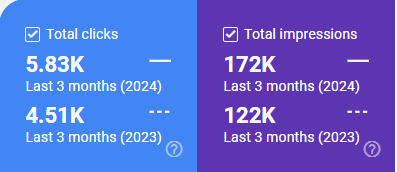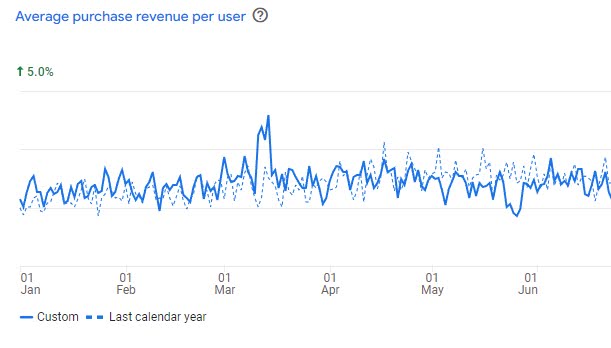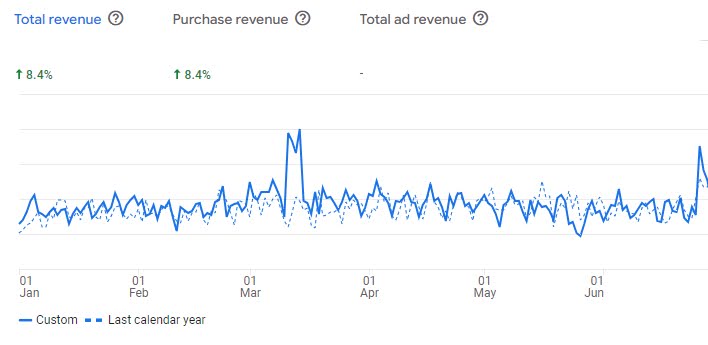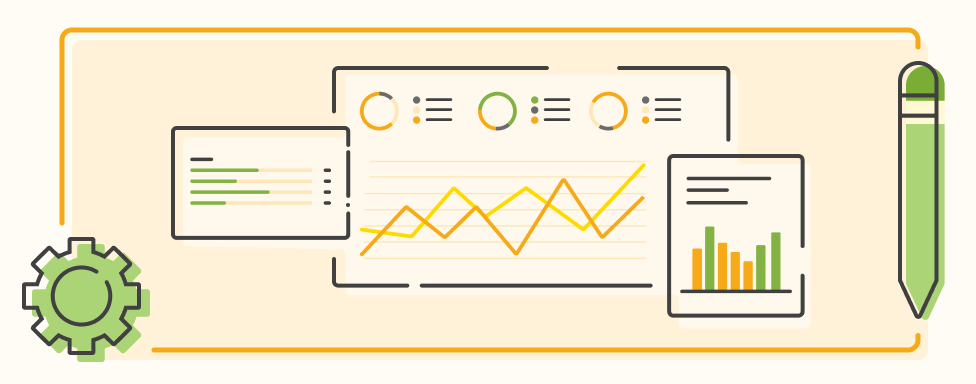The eCommerce world is constantly changing, and making informed decisions is crucial to the success of any project. Leveraging data analytics can significantly enhance decision-making processes, leading to better project outcomes and higher client satisfaction. In this article, we’ll explore the importance of data analytics in project management and how we can use those data in our leverage.
At Inchoo, we use Google Analytics (GA4) as one of the primary tools for data collection & analysis. It is one of our key tools for monitoring clients’ data, but it also allows us to track their business growth and general eCommerce performance.
Google Analytics provides insights into user behavior, traffic sources, and different events. Keeping track of the marketing trends, and comparing these trends with clients’ data allows us to more precisely predict user behavior or even predict customer needs in the near future. If we efficiently manage to predict those trends it can give our clients leverage on the market itself and make them more competitive.
Process for setting up key metrics at Inchoo
Since GA4 gives us many possibilities in terms of tracking, it can be challenging to decide which metrics are the most important. At Inchoo we have an individual process for each of our clients. When we say individual, we mean that once we get to know our client’s business goals, we create a project strategy. It is a collaborative effort with the client. During this process, we decide which metrics are most relevant. There are always the same fundamental metrics that we track like revenue, sessions, page views, AOV, etc., but depending on the client specifics we decide if there are any other metrics we should keep an eye on.
Sometimes, using GA4 can seem overwhelming since the data does not always help in the search for an exact solution, so this is where the rest of the team comes to the rescue. This is important because a project manager can not always have all the information, knowledge, and visibility. Working with backend developers, design teams and SEO specialists is crucial for the whole data-gathering process. If we analyze data from all perspectives (technical, managerial, marketing, and end users) we can get the full image of the situation those data are presenting.
The data-gathering process has to be carefully planned. First, we inform ourselves about our client’s business and we try to get as much as possible information on their business. Who is the target audience? What are business goals? What markets are we trying to reach? Are products seasonal? Which of the current products has the best-selling performance?
As soon as we get to know our client, there is a second part of the research we have to do, and that is getting to know our client’s competition.
After we get all the data needed, we can start with planning. Here is where the whole team interacts. The design team is best informed from the UX perspective and their advice is crucial since they see the benefits, flaws, and potential upgrades from the user perspective. Backend and frontend developers have the best visibility on the technical perspective of the website and its possibilities and flaws. In the end, an SEO specialist, based on the information and advice given by the design team and developers, shares their insights on how to set up the whole SEO strategy. Once we analyse all of those perspectives, the team decides how to proceed with data-collecting based on the market needs and current technical website possibilities.
The last phase is periodic analysis. This phase comes after the whole agreed model has been implemented. Irrelevant if we have worked on the new webshop development, doing smaller upgrades, or just trying to make smaller changes on the current e-commerce website to boost traffic or some key metrics, testing and monitoring have to be performed. Analysis gives us meaningful information, information on whether our actions and planning gave positive results or not.
How data-driven decisions helped us
Boosting clients’ data can be achieved in several ways. Experience taught us that sometimes analyzing the data can give us answers to possible improvements the site desperately needs, but it can also work the other way around. Many times we experienced situations where we have done various improvements and upgrades on the website in agreement with a client, and those specific improvements boosted the client’s data during the next period. In that situation, after data monitoring, we saw at what point in time data went up, and now we can easily conclude why it went up. This data-driven analysis gave us insight into possible similar future situations and a better understanding of users’ habits, needs, and market fluctuations.
For example, we had a situation where we observed significant oscillations in organic performance for one of our newer clients who has specialized in the sporting industry. Since most of their products are seasonal we expected oscillation in the sessions during different season periods, however, what we didn’t expect was a drop in the organic sessions.
When we compared last year’s data with the current one, there were obvious drops in organic sessions. The raw data didn’t inform us about the cause of such a negative trend, so we proposed an SEO audit to the client. SEO audit helped us identify the causes of the poor performance.
The conclusion was that the overall indexing strategy was not implemented well. Too many pages without SEO value were indexed, which caused large amounts of duplicate content and dispersion of ranking potential for category and product pages. After properly implementing canonical and meta robot tags, Google consolidated the signals, and we soon saw improvements in organic sessions and other organic key performance indicators like impressions, CTR, and SERP positions.

The opposite of the previous example was the situation of one of our long-term clients who established their position in the market of photography.
Since they have been our partners for several years we already know their biggest competitors, their business goals, and the market they are operating. Nevertheless, we are still regularly analyzing data to check market fluctuations, trend changes, and the effect of those transformations on their webshop performance. With them, we have a different approach, as we regularly maintain the website in general. Constantly improving the site is crucial for eCommerce business. Some changes bring positive results in terms of data growth, and some changes do not have any major impact on the user experience. It is not easy to recognize which of these changes made an impact, and sometimes it is even impossible to notice, especially if a lot of changes have been made to the website.
However in this process with carefully planned improvements we are targeting a general data boost in terms of sales, sessions, page views, and other key factors for business growth. At the start of each year, our project team in collaboration with the client team decides what key factors will be done this year.
During the last year and the first half of this year, we made many improvements. After we planned our webshop strategy for the upcoming year, we started working on those upgrades. The whole development was organized into sprints spread out throughout the whole year. During our last year, we have done many upgrades, customizations, and various improvements on the website like adding new payment methods, customizing shipping methods so the customers could have multiple shipping possibilities, minifying the current code to improve the site speed, making small design changes on certain pages to make them more user friendly, customizing and improving gift card options, refreshing the transactional email templates, and the list goes on.
A lot of hard work and many hours have been invested to make those upgrades and eventually improvements that will help with their business growth. Through time we achieved success, as once we started analyzing data we saw a positive impact in all areas.

The average purchase revenue per user has also increased by 5%, leading to higher revenue in general.

In the end, our client now has 8.4% higher revenue than last year.

This is one example where we learn how constant upgrades, which are carefully planned can boost various metrics. And why is this important for us? Now we can read data more accurately, as we can see what changes made an impact, when they made an impact, and which target audience had the best response to those upgrades. This data analysis gives us better insight into the future trends and customer needs, so for the next year, we can plan their growth more precisely and make our clients even more competitive.
Here is just an example of one of the upgrades.
We introduced a gift card feature to one of the websites. Enabling this module had to be followed with frontend stylisation to affect customers positively. So we made frontend changes on the gift card pages, and gift card transactional emails. Since this was a new product introduced to our customers, we started measuring their performance after some time.

In the first half of this year, the gift cards started to monetize, and they are currently ranking 37th in terms of monetization out of the total products. This is a good start for the first 6 months, and it seems our users have positive thoughts about this type of product.
Conclusion
We are practicing data analysis on all of our projects, and so far it has given many benefits for our clients. Reading the data from analytics is crucial for business growth and it should be included in every step of project planning. As a project manager, I am constantly analyzing data, but we see that with the whole team’s engagement, we can achieve much more.
We learned that sometimes data analysis is not the only way to decide what improvements should be made, or what trends and user behaviors we can expect. Detailed planning of the website upgrades in collaboration with the rest of the team and clients can bring positive results as well. This approach also gives us insight into the market trends, customers’ habits, and needs, as we can read data and analyze it more accurately.
Hopefully, through this article, we have managed to give you a small insight into our way of work and the importance of data-driven decision-making. If you like how we think and you have a webshop to improve, we will happily analyze your data and make plans to boost your business.



